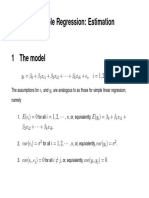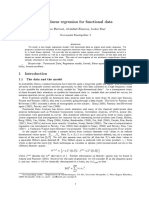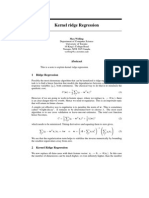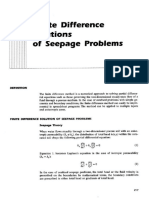0% found this document useful (0 votes)
84 views3 pagesK-Nearest-Neighbors Regression: I2n (X) I K 1 N
k-nearest-neighbors regression is a basic machine learning method where the value predicted for a new data point is the average of the values of the k nearest neighbors. The number of neighbors k can be varied, with smaller k giving a more flexible fit and larger k a less flexible fit. The k-NN estimate is discontinuous and jagged, especially for small k, because the weights assigned to each training point are discontinuous functions of the input. k-NN regression is considered a linear smoother and is universally consistent under certain conditions on k growing with sample size n. If the underlying function is Lipschitz continuous, the error of k-NN decays at a rate of n-2/(2+d)
Uploaded by
Wardatul MaghfirohCopyright
© © All Rights Reserved
We take content rights seriously. If you suspect this is your content, claim it here.
Available Formats
Download as DOCX, PDF, TXT or read online on Scribd
0% found this document useful (0 votes)
84 views3 pagesK-Nearest-Neighbors Regression: I2n (X) I K 1 N
k-nearest-neighbors regression is a basic machine learning method where the value predicted for a new data point is the average of the values of the k nearest neighbors. The number of neighbors k can be varied, with smaller k giving a more flexible fit and larger k a less flexible fit. The k-NN estimate is discontinuous and jagged, especially for small k, because the weights assigned to each training point are discontinuous functions of the input. k-NN regression is considered a linear smoother and is universally consistent under certain conditions on k growing with sample size n. If the underlying function is Lipschitz continuous, the error of k-NN decays at a rate of n-2/(2+d)
Uploaded by
Wardatul MaghfirohCopyright
© © All Rights Reserved
We take content rights seriously. If you suspect this is your content, claim it here.
Available Formats
Download as DOCX, PDF, TXT or read online on Scribd
/ 3














































































